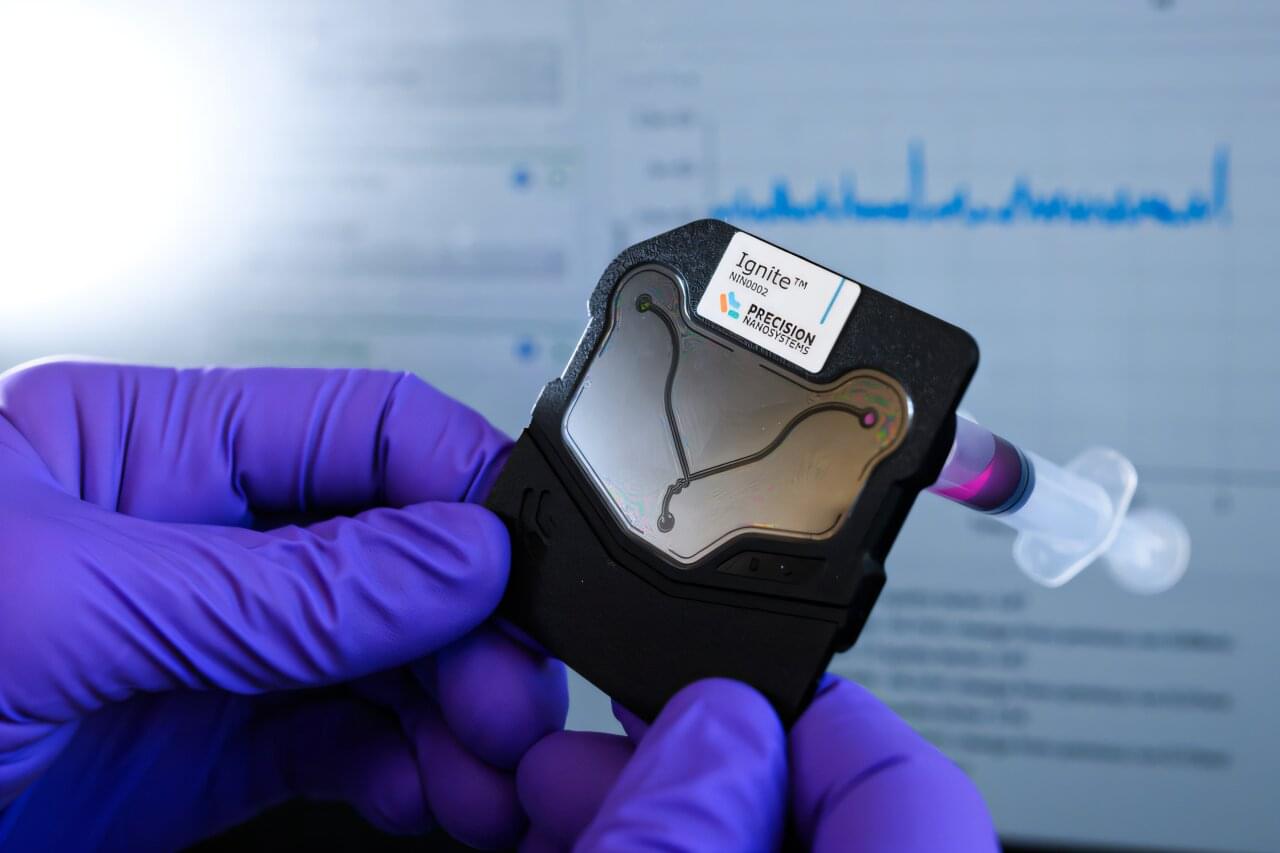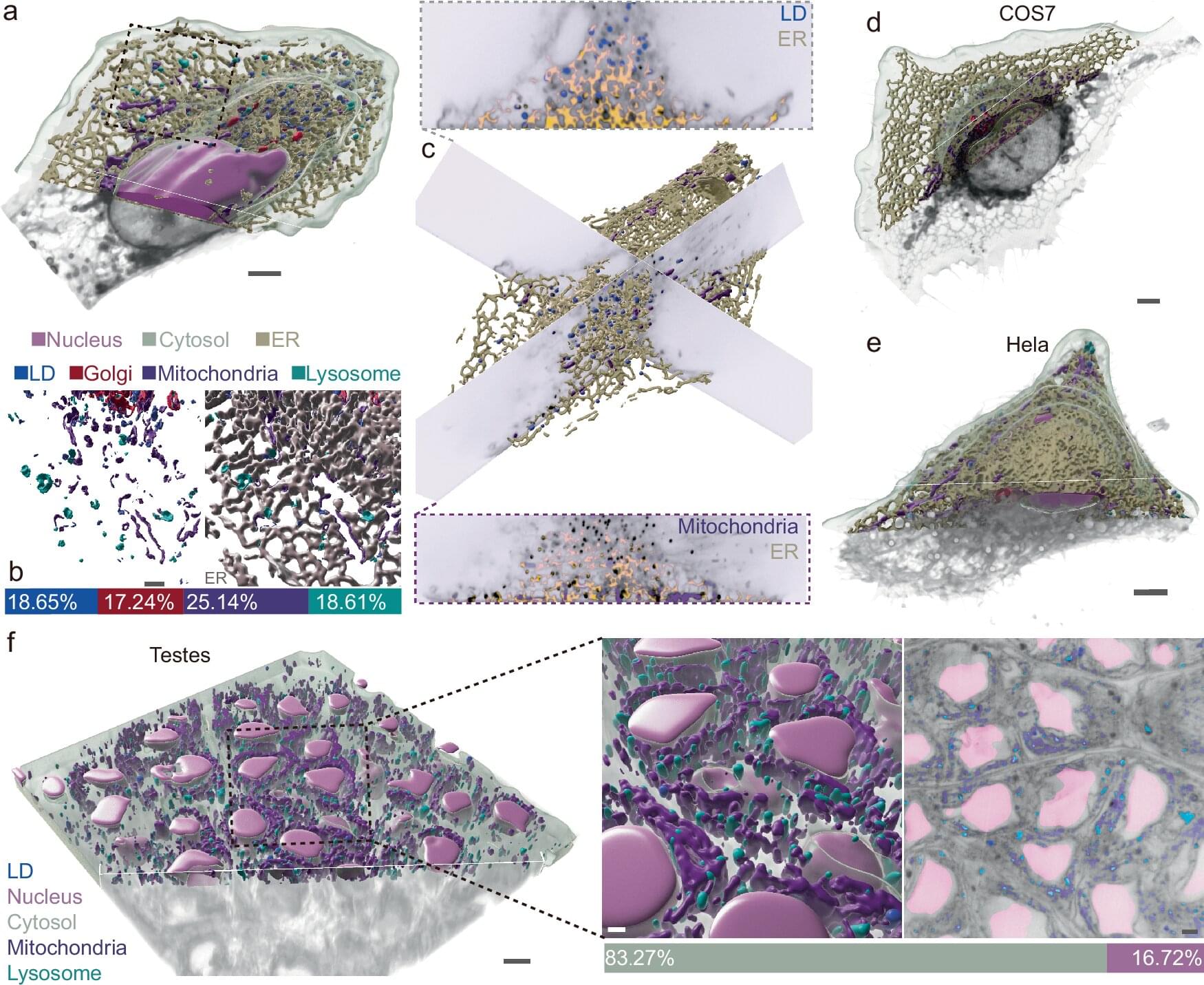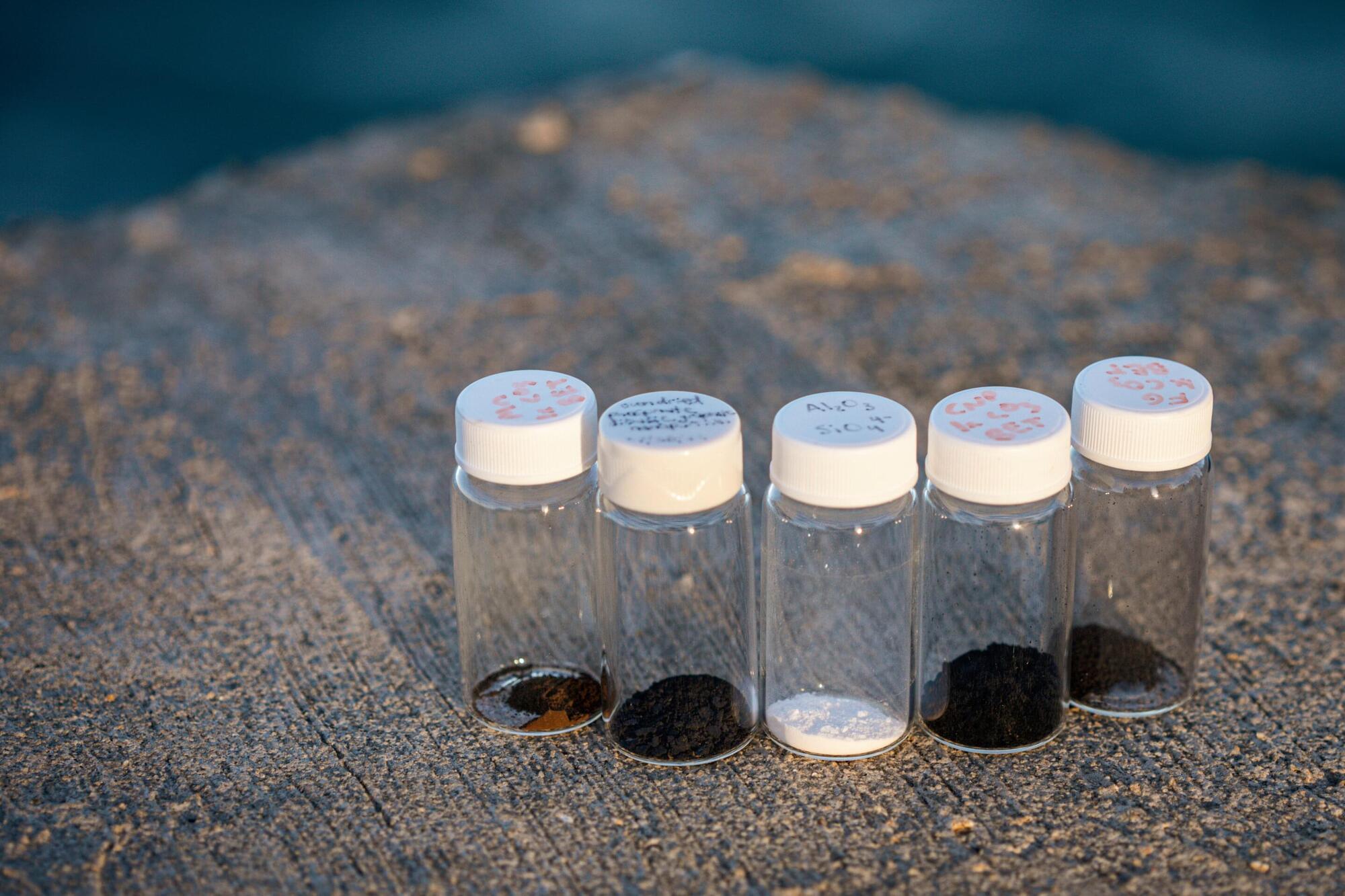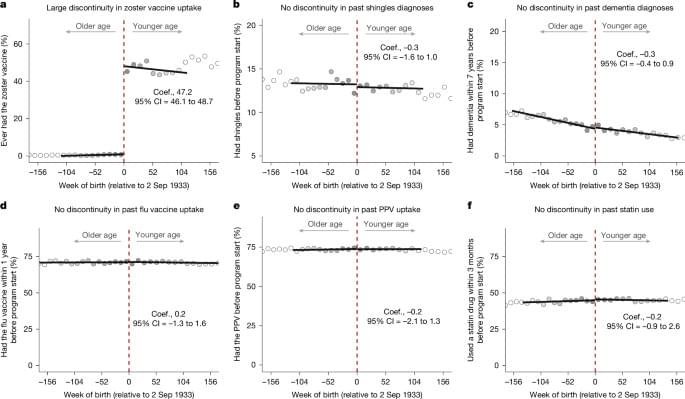Unitree’s G1 demonstrates a new level of robotic agility with a complex movement following an AI software update.
Get the latest international news and world events from around the world.

Engineers develop a way to mass manufacture nanoparticles that deliver cancer drugs directly to tumors
Polymer-coated nanoparticles loaded with therapeutic drugs show significant promise for cancer treatment, including ovarian cancer. These particles can be targeted directly to tumors, where they release their payload while avoiding many of the side effects of traditional chemotherapy.
Over the past decade, MIT Institute Professor Paula Hammond and her students have created a variety of these particles using a technique known as layer-by-layer assembly. They’ve shown that the particles can effectively combat cancer in mouse studies.
To help move these nanoparticles closer to human use, the researchers have now come up with a manufacturing technique that allows them to generate larger quantities of the particles, in a fraction of the time.

Key differences between visual and memory-led Alzheimer’s discovered
Differences in the distribution of certain proteins and markers in the brain may explain why some people first experience vision changes instead of memory loss in Alzheimer’s disease, finds a new study by UCL researchers.
Posterior cortical atrophy (PCA) is a rare form of Alzheimer’s disease that, rather than causing problems with memory, leads to difficulties with reading, navigating, and recognizing objects. Studies suggest that one in 10 patients with Alzheimer’s disease has a form which is visual, rather than memory-led.
As well as presenting with unusual symptoms, individuals with PCA typically develop symptoms younger than most people with Alzheimer’s disease, with onset usually in their 50s and 60s.

Super-resolution imaging technology reveals inner workings of living cells
A breakthrough in imaging technology promises to transform our understanding of the inner workings of living cells, and provide insights into a wide range of diseases.
The study, recently published in the journal Nature Communications, unveils an innovative approach that combines super-resolution imaging with artificial intelligence and deep learning to reveal subcellular structures and dynamics. It was led by researchers from Peking University, Ningbo Eastern Institute of Technology and the University of Technology Sydney.
“It’s like taking an airplane over a city at night and watching all the live interactions,” said UTS Distinguished Professor Dayong Jin. “This cutting-edge technology will open new doors in the quest to understand the intricate world within our cells.”

When AI builds AI: The next great inventors might not be human
In the paper accompanying the launch of R1, DeepSeek explained how it took advantage of techniques such as synthetic data generation, distillation, and machine-driven reinforcement learning to produce a model that exceeded the current state-of-the-art. Each of these approaches can be explained another way as harnessing the capabilities of an existing AI model to assist in the training of a more advanced version.
DeepSeek is far from alone in using these AI techniques to advance AI. Mark Zuckerberg predicts that the mid-level engineers at https://fortune.com/company/facebook/” class=””>Meta may soon be replaced by AI counterparts, and that Llama 3 (his company’s LLM) “helps us experiment and iterate faster, building capabilities we want to refine and expand in Llama 4.” https://fortune.com/company/nvidia/” class=””>Nvidia CEO Jensen Huang has spoken at length about creating virtual environments in which AI systems supervise the training of robotic systems: “We can create multiple different multiverses, allowing robots to learn in parallel, possibly learning in 100,000 different ways at the same time.”
This isn’t quite yet the singularity, when intelligent machines autonomously self-replicate, but it is something new and potentially profound. Even amidst such dizzying progress in AI models, though, it’s not uncommon to hear some observers talk about the potential slowing of what’s called the “scaling laws”—the observed principles that AI models increase in performance in direct relationship to the quantity of data, power, and compute applied to them. The release from DeepSeek, and several subsequent announcements from other companies, suggests that arguments of the scaling laws’ demise may be greatly exaggerated. In fact, innovations in AI development are leading to entirely new vectors for scaling—all enabled by AI itself. Progress isn’t slowing down, it’s speeding up—thanks to AI.

With affordable materials, researchers pull carbon directly from the air using changes in humidity
Researchers at Northwestern University have expanded the potential of carbon capture technology that plucks CO2 directly from the air by demonstrating that there are multiple suitable and abundant materials that can facilitate direct air capture.
In a paper titled “Platform materials for moisture-swing carbon capture” published in the journal Environmental Science & Technology, the researchers present new, lower-cost materials to facilitate moisture-swing to catch and then release CO2 depending on the local air’s moisture content, calling it “one of the most promising approaches for CO2 capture.”
Atmospheric CO2 continues to increase and, despite considerable worldwide efforts to cut down on carbon waste, is expected to rise more in coming decades.
Cell Cycle / Cell Division & its Regulation
The cell cycle is a fundamental process that drives cell growth, division, and replication. In this video, we’ll break down the different phases of the cell cycle (G1, S, G2, and M), explore the key checkpoints that regulate progression, and discuss the critical role of cyclins and CDKs in cell cycle control.
Join this channel to get access to perks:
https://www.youtube.com/channel/UCl_aeLZtFMx_EE2Kf9QMvOA/join.
Thank You For Watching.
Please Like And Subscribe to Our Channel: https://www.youtube.com/EasyPeasyLearning.
Like Our Facebook Page: https://www.facebook.com/learningeasypeasy/
Join Our Facebook Group: https://www.facebook.com/groups/460057834950033
Support Our Channel: https://www.patreon.com/supereasypeasy


Scientists discover “Half-Ice, Half-Fire” — A new exotic phase of matter
Discovering and controlling exotic physical states is key in condensed matter physics and materials science. It has the potential to drive advancements in quantum computing and spintronics.
While studying a ferrimagnet model, scientists at the U.S. Department of Energy’s Brookhaven National Laboratory uncovered a new phase of matter called “half-ice, half-fire.” This state is a twin to the “half-fire, half-ice” phase discovered in 2016.
Space Travel in 25 Years! This Rocket is So Fast, It Could Reach Another Star
Could we reach Alpha Centauri in just 60 years? The Nuclear Salt Water Rocket (NSWR) might be the answer! With speeds of up to 7.6% of light speed, this game-changing propulsion system could make interstellar travel a reality within a single human lifetime. But how does it work? What challenges stand in the way? In this episode, we break down everything you need to know about NSWR and its potential to revolutionize space travel!
Watch now and explore the future of interstellar exploration!
Paper link : https://path-2.narod.ru/design/base_e… 00:00 Introduction 00:58 How the NSWR Works and Its Breakthrough Potential 03:41 Feasibility and Engineering Challenges 06:30 The Potential Impact on Space Exploration 09:35 Outro 09:44 Enjoy MUSIC TITLE : Starlight Harmonies MUSIC LINK : https://pixabay.com/music/pulses-star… Visit our website for up-to-the-minute updates: www.nasaspacenews.com Follow us Facebook: / nasaspacenews Twitter:
/ spacenewsnasa Join this channel to get access to these perks:
/ @nasaspacenewsagency #NSN #NASA #Astronomy#NuclearSaltWaterRocket #SpaceExploration #InterstellarTravel #AlphaCentauri #FutureOfSpaceTravel #SpaceTechnology #RocketScience #FastestRocket #NASA #RobertZubrin #DeepSpaceExploration #SpacePropulsion #NuclearRockets #Physics #Astrophysics #NewSpaceRace #SpaceEngineering #CosmicExploration #BeyondOurSolarSystem #WarpDrive #Science #SpaceScience #RocketTechnology #StarTravel #FusionPropulsion #MarsToStars #LightSpeedTravel #FuturisticTechnology #HighThrustPropulsion #SpaceFrontier #NextGenSpacecraft.
Chapters:
00:00 Introduction.
00:58 How the NSWR Works and Its Breakthrough Potential.
03:41 Feasibility and Engineering Challenges.
06:30 The Potential Impact on Space Exploration.
09:35 Outro.
09:44 Enjoy.
MUSIC TITLE : Starlight Harmonies.
MUSIC LINK : https://pixabay.com/music/pulses-star…
Visit our website for up-to-the-minute updates: